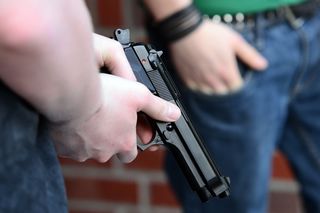Anger
Spotting Pre-Attack Behaviors of Active Shooters
A new FBI special report on gun violence highlights 5 key issues.
Posted July 17, 2018

From January to December of 2017, there were 30 different active shootings in the United States—the largest number ever recorded by the FBI during a single year. With deadly attacks occurring so frequently, it is easy to see why so many of us have become inured to the human tragedy of extreme gun violence.
From aging baby boomers to generation z teenagers, concerned citizens are struggling with a fundamental question right now: Can anything be done to prevent attacks like these? There is cause for optimism, however, because something can be done using a couple techniques from the behavioral science toolkit: observation and analysis of prior behavior.
FBI Reports
In 2014, the Federal Bureau of Investigation (FBI) published “A Study of Active Shooter Incidents in the United States Between 2000 and 2013” which was designed to provide a baseline to guide law enforcement officials, first responders, educators, and the general public to a better understanding of active shooter incidents. Now referred to as Phase I, this report is a companion to a more recent Phase II document.
In summer 2018, the FBI released a new report, “A Study of the Pre-Attack Behaviors of Active Shooters in the United States Between 2000 and 2013” which examines motives driving the offenders and their observable pre-attack behaviors. The 2018 study on pre-attack behaviors seeks to answer vital questions such as "how do the active shooters behave before the attack?" and, if it can be determined, "why did they attack?"
5 key findings summarized in the recent report
1. The 63 active shooters examined in this study did not appear to be uniform in any way such that they could be readily identified prior to attacking based on demographics alone. However, 94% (59) of the 63 active shooters were male and only four were female.
2. Active shooters take time to plan and prepare for the attack, with 77% of the subjects spending a week or longer planning their attack and 46% spending a week or longer actually preparing (procuring the means) for the attack.

3. The FBI could only verify that 25% of active shooters in the study had ever been diagnosed with a mental illness. Of those diagnosed, only three had been diagnosed with a psychotic disorder.
4. Each active shooter displayed, on average, 4 to 5 concerning behaviors over time that were observable to those in close contact with the shooter. The most common behavioral categories were anger issues, impulsivity, interpersonal problems, depression, anxiety, excessive risk taking, and leakage of violent intent to a third-party.
5. In the calendar year leading up to the attack, active shooters typically experienced multiple life stressors (an average of 3.6 separate stressors). Examples of serious stressors include death of a loved one, job-related problems, romantic relationship conflict, financial distress, issues of criminality, drug abuse, and physical injury.
The FBI would like to see this information used in the development of new and effective ways to conduct threat assessments, detect early intervention plans, and create potent threat mitigation strategies.
References
Blair, J. Pete, and Schweit, Katherine W. (2014). A Study of Active Shooter Incidents, 2000 - 2013. Texas State University and Federal Bureau of Investigation, U.S. Department of Justice, Washington D.C. 2014.
Silver, J., Simons, A., & Craun, S. (2018). A Study of the Pre-Attack Behaviors of Active Shooters in the United States Between 2000 – 2013. Federal Bureau of Investigation, U.S. Department of Justice, Washington, D.C. 20535.


